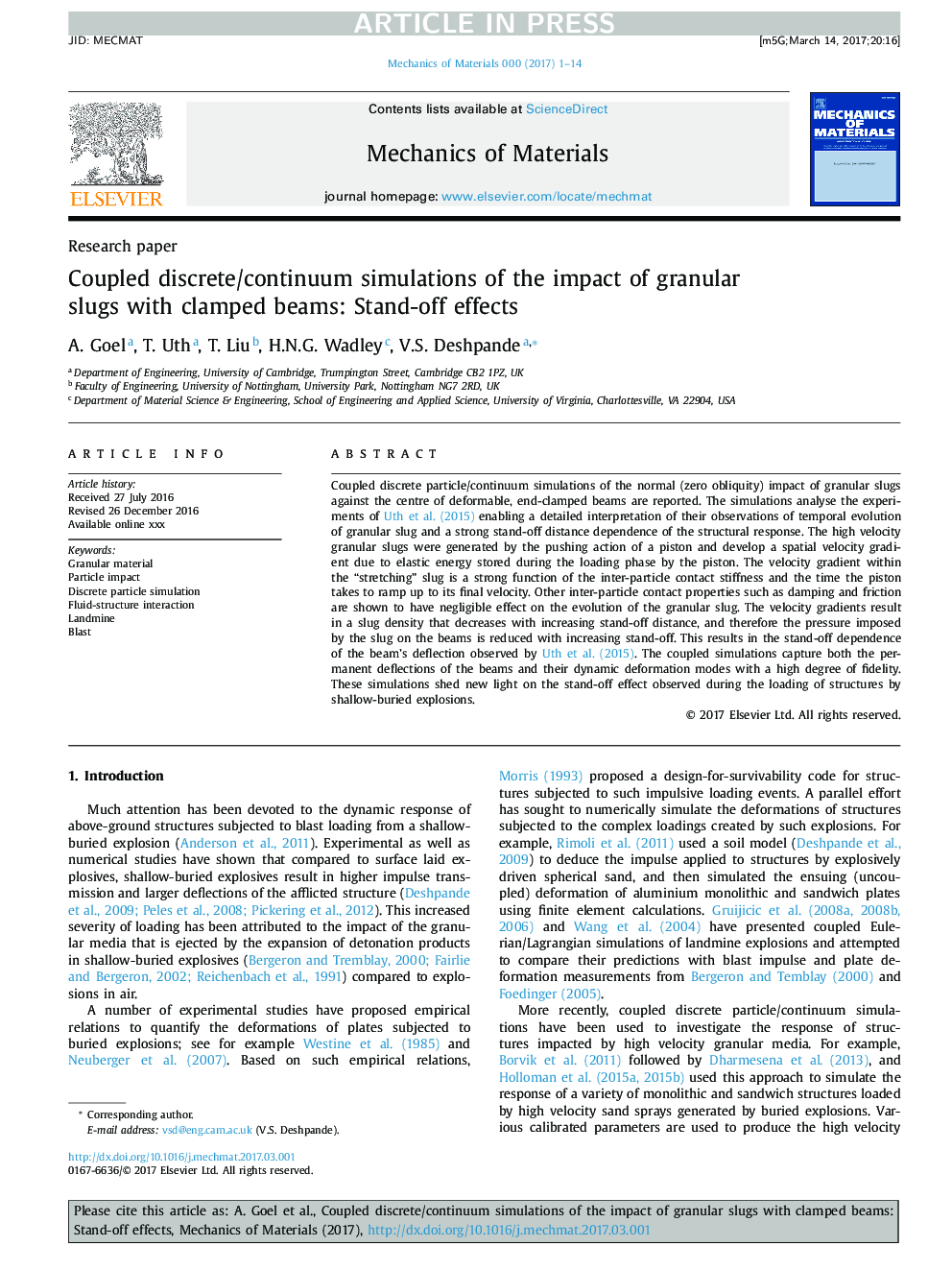| Article ID | Journal | Published Year | Pages | File Type |
|---|---|---|---|---|
| 7178589 | Mechanics of Materials | 2018 | 14 Pages |
Abstract
Coupled discrete particle/continuum simulations of the normal (zero obliquity) impact of granular slugs against the centre of deformable, end-clamped beams are reported. The simulations analyse the experiments of Uth et al. (2015) enabling a detailed interpretation of their observations of temporal evolution of granular slug and a strong stand-off distance dependence of the structural response. The high velocity granular slugs were generated by the pushing action of a piston and develop a spatial velocity gradient due to elastic energy stored during the loading phase by the piston. The velocity gradient within the “stretching” slug is a strong function of the inter-particle contact stiffness and the time the piston takes to ramp up to its final velocity. Other inter-particle contact properties such as damping and friction are shown to have negligible effect on the evolution of the granular slug. The velocity gradients result in a slug density that decreases with increasing stand-off distance, and therefore the pressure imposed by the slug on the beams is reduced with increasing stand-off. This results in the stand-off dependence of the beam's deflection observed by Uth et al. (2015). The coupled simulations capture both the permanent deflections of the beams and their dynamic deformation modes with a high degree of fidelity. These simulations shed new light on the stand-off effect observed during the loading of structures by shallow-buried explosions.
Keywords
Related Topics
Physical Sciences and Engineering
Engineering
Mechanical Engineering
Authors
A. Goel, T. Uth, T. Liu, H.N.G. Wadley, V.S. Deshpande,
